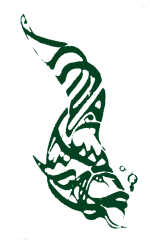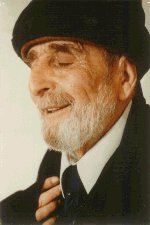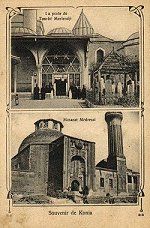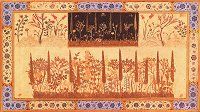The tekke was your usual synthesis of Western and Middle-Eastern traditions. Salmon and turkey were on the banquet menus as was Imam Bayildi, dolmas, shepherd's salad (aka greek salad), bulgur pilaf, hummus and baba ganoush. Dessert could range from carrot cake to baklava. Being a place where we served many people at a sitting during weekend workshops we always made some form of soup. We also canned a lot of fruits and vegetables and at times bred rabbits in the back. We learned to make rice the Sufi way (or so we were told):
Boil the rice for 15 minutes in water with a teaspoon of butter and white pepper. Cover with a cheesecloth or clean tea-towel and set it in a warm place for another 15 to 20 minutes. Fluff with a fork. You can add pine nuts to it when boiling it for a hearty pilaf.
Shaikh Murat Yagan, the Abkhazian Prince, used to teach us about making Turkish coffee. He used a special technique: he would add a turkish coffee cup of cold water after the first rising. This stimulated the grounds and made the coffee seem less bitter to us. He also taught us to read coffee cups:

|
After drinking your coffee you place the saucer upside down on the top of the cup. Then after saying a short prayer one turns the whole thing upside down again. This time the cup is facing down on top the saucer which is now facing right side up. If you made the coffee well and the grounds were of a proper consistency (fine powder), you should find a pattern in the sludge when you remove the cup to look at it. Insha'allah inspiration will come and show you what it is you need to see. Sometimes its in the form of calligraphy, and sometimes an image is revealed that is quite distinct. |
Other tekkes had their way of eating. In the late seventies, my wife and I were invited to dine at the Halveti Tekke in Istanbul. The women ate together, and the men sat on the ground and tucked a large table cloth into our shirt tops and ate with one hand from a communal bowl. We went to one dervish house in the suburbs and were seated around the table with all of their family; we became their guests for a while. In spite of our poor Turkish we were treated very well to good hearty food.
The whole sheep was butchered and cooked and distributed throughout the neighbourhood in such lightening quick time I was amazed. Dede had a very small kitchen and his wife Ferishta Hanim (K.A.S) and all the female relatives squeezed into the kitchen to make the meal. On that day tradition dictates you go to greet your Sheikh and throughout the day people showed up to pay their respects including the present chief Mevlevi -- Farukh Çelebi and his wife.
One day we were taken to Meram, which is the home of the little tomb of the Ateshbaz Dede who was Mevlana Jelaluddin's first cook. There we were invited into the home of a farmer whose son I had helped on the bus by giving him some Rescue Remedy from Dr. Bach. It was an ancient farmhouse, and cheeses were hanging in the ceiling rafters. We had Turkish chai and ate bread and cheese with melon. The cheese was very dry and crumbly, so I was shown how to dip slices of melon into it to prevent myself choking on it. Other memorable meals were of eating Mevlana Borek, a sort of pizza style fast food on a carpet in one of the old carpet shops of Konya. This was still the days when the old part of the town was predominant and there were open markets — fish, vegetables, and so on. Orchards still grew in Meram, and it was quite idyllic.
Later Sheikh Murat's wife Maisie (Mua'ziz Hanim) showed many of us how to really cook Turkish dishes such as the many stews and yogurt dishes. Today I can still remember doing a sit down meal for 60 around a massive table as the many Sufis and friends came to listen to Suleyman Dede, Sheikh Murat and other teachers. Although I am a little out of practice, I can still get the juice going when we have to make a big meal; and pot-lucks are still something I do once a month upstairs in the house where I rent a room.
Ashk Olsun
Ya Hu!
Copyright © 1999, 2000
Kathleen Seidel All Rights Reserved
Permission is explicitly granted for educational and non-profit purposes. Please use the credit: Serving the Guest. Copyright 1999, 2000 Kathleen Seidel. Copyright information for previously published material by other authors used by permission, and print sources for images, may be found at http://www.superluminal.com/cookbook.


